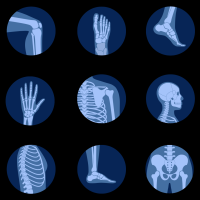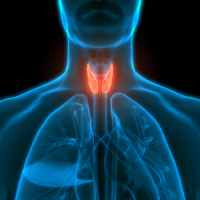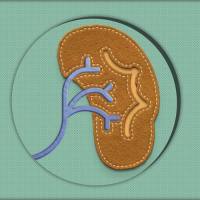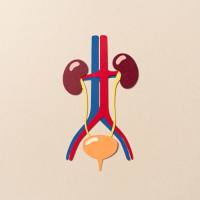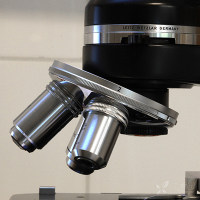2003年全国肿瘤化疗会议文章
Raymond Liang, Department of Medicine, University of Hong Kong, Queen Mary Hospital, Hong Kong.
Nasal NK/T-cell lymphoma is an uncommon tumour and it shows great variations in incidence in different racial populations and geographic locations. In Asia, the tumor is seen mainly in Southern China, Japan and Korea. In the WHO classification for hematopoietic and lymphoid tumors, natural killer cell malignancies are recognized as distinct clinio-pathological entities and they include the extra-nodal NK/T-cell lymphoma, nasal type. The midline nasal cavity is a commonest primary site for extranodal NK/T-cell lymphoma, nasal type. Extranodal NK/T-cell lymphoma, nasal type is characterized histologically by a broad spectrum of morphological features. Extensive mucosal ulceration is typically present with a diffuse lymphomatous infiltrate. An angiocentric and angio-destructive growth pattern is usually seen, resulting in severe tissue ischemia and extensive coagulative necrosis. The neoplastic cells of this tumour are mostly of NK-cell origin and are CD56 positive, although rare cases of CD56 negative cytotoxic T-cell phenotype have also been observed. Tumors of NK-cell origin are typically surface CD3 antigen negative but cytoplasmic CD3 epsilon chain positive. Therefore, CD-3 staining is often negative on cryostat sections but positive in paraffin sections with the polyclonal antisera. Clonal T-cell receptor gene rearrangements are typically absent supporting a true NK-cell origin of the tumor. The tumor has a very strong association with Epstein-Barr virus (EBV). This provides a good marker for diagnosis of this tumor. The EBV-encoded small non-polyadenylated RNAs (EBV encoded early RNA - EBER) expression may be used for identification of the neoplastic cells for diagnosis as well as for monitoring of response to therapy. Complex but non-specific cytogenetic abnormalities are found in most cases of this tumor. Chromosome 6 abnormalities, including del (6)(q21q25) and i (6)(p10) are common.
Nasal NK/T-cell lymphoma more commonly affects the males and the median age of the patients is around 50 years old. The tumor typically presents with nasal symptoms including obstruction and bleeding, or a nasal mass. There may be local invasion into the orbit, nasal sinuses, nasopharyx, oropharynx, palate and even the larynx. Cranial nerves may also be involved but meningeal involvement is not common. Systemic dissemination is often late but clinically very aggressive. Favorite metastatic sites include skin, gut and testis, sites where CD56 are normally expressed. Patients may also present with a primary tumour in one of these sites. In a proportion of these patients, however, occult nasal disease may be present. Circulating lymphoma cells together with marrow involvement may be seen as a terminal event. A high index of suspicion is essential for early diagnosis. Because of the anatomical location of the tumor, the size of the biopsy specimens from nasal endoscopy is often small and necrotic. Multiple biopsies of adequate size are required before a definitive diagnosis can be made. For the difficult cases, the use of EBV markers may also provide additional clues. Other than the usual staging investigations in general for non-Hodgkin’s lymphoma, including CT scan of thorax and abdomen and bone marrow biopsy, a CT scan or an MRI scan of the nasal region may give a better picture of the extent of local spread of the tumor.
Local radiotherapy and chemotherapy are both effective treatments for primary nasal lymphoma. However, with radiotherapy or chemotherapy alone, treatment failure is still common. Local recurrences are usually followed by systemic relapse. Better clinical outcome has been obtained with the combined use of chemotherapy and local radiotherapy. For patients with localized disease at presentation, prolonged remission is achievable in about half of the cases. For patients with disseminated disease either at presentation or at disease progression, the disease is almost invariably fatal. The relatively poor clinical outcome may be explained by the ischemic nature of the tumor or primary drug resistance. There is no consensus on the optimal chemotherapeutic regime for this tumor. Because of the relative rarity of this disease, prospective clinical studies are not available. An anthracycline containing regimen, such as CHOP, is commonly used. It remains uncertain the other more complicated regimens, such as ProMACE-cytaBOM, are more effective. Following therapy, it is essentially to monitor the patient closely with nasal endoscopy and biopsy. Random blind biopsy is recommended even if the nasal mucoa appears normal on endoscopy, as occult residual tumor cells may persist. Interpretation of the biopsy specimens can be even more difficult at this stage. The use of EBV markers, such as EBER staining, may sometimes be helpful. Further studies are ongoing to see whether molecular markers are even more useful. The optimal timing of radiotherapy in relation to chemotherapy is also uncertain. The presence of residual tumor cells after 3 months of initial chemotherapy is usually indicative of inadequate response to therapy. Decision has to be made at that time to give local radiotherapy early and to switch to an alternative chemotherapy regime. High dose chemotherapy with autologous stem cell rescue may also have a role in the management of this tumor. The best result is seen when it is performed at the time of remission. There is very limited experience in the use of allogeneic transplants, including the non-myeloablative approach, for this tumor.




